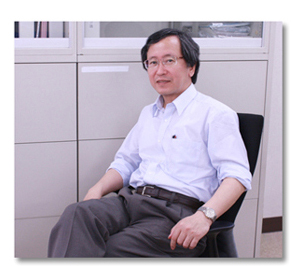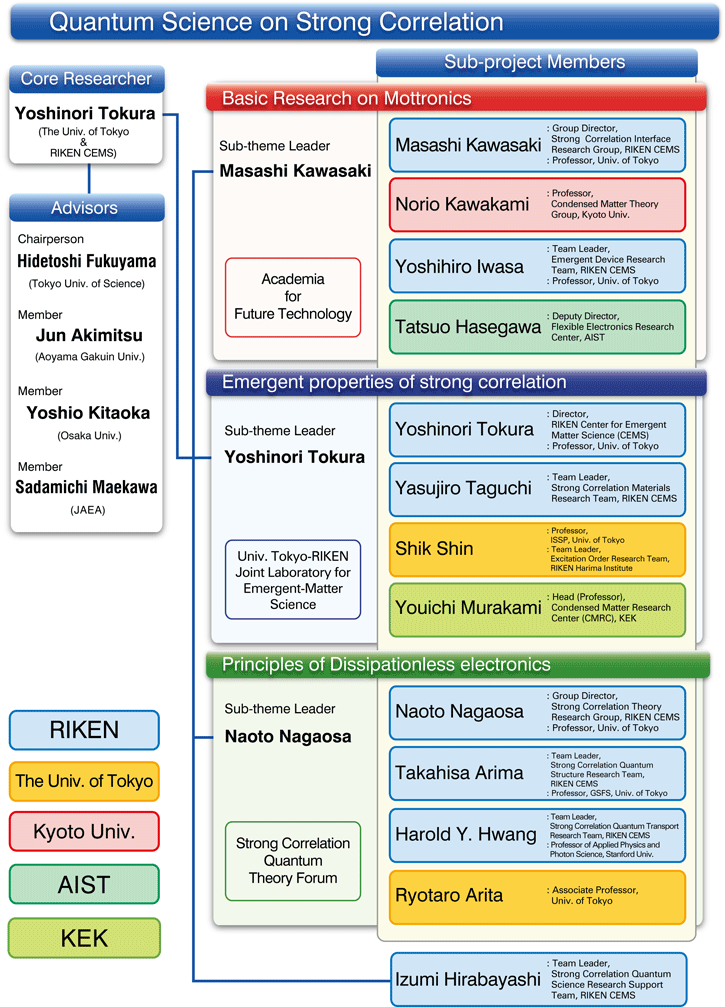Project
Greeting from our Core Researcher
- "More is different." said Phillp Anderson who is a renowned theorist of condensed matter physics. It means that existence of many bodies is fundamentally different from that of unity. As well as the research on the ultimate form of matter: particle physics, that on the strongly correlated systems having many degrees of freedom such as atoms, molecules, and/or electrons in solid state requires a qualitatively new concept, because it is one of those categories that can never reach. I truly think the project of the quantum science of strong correlation (QS2C) should be conducted for the progress of fundamental science, at the same time, conceiving the wide applications to advanced technologies.
Core-Researcher: Yoshinori Tokura 
Overview of the project
- Strongly correlated electrons in solids exhibit surprising emergent properties/functions which cannot be understood within the framework of conventional semiconductor/metal physics. By controlling the complex interplay among multi-degrees of freedom of correlated electrons, we aim at producing unprecedented and innovative electronic properties/functions, such as high-efficiency energy conversion and quantum state (information) control without energy consumption. Specifically, we will construct a new scheme of materials science and demonstrate new principles of frontier technology, focusing on three major important subjects;
- (A) Basis of Mottronics (Principles of electronics which exploits the metal-insulator transitions that happen within nano-meter scale regions in strongly correlated electron systems)
- (B) Emergent properties arising from strong correlation (Exploring gigantic response among electric-magnetic-thermal-optical inputs and outputs)
- (C) Principles of dissipationless electronics (Using quantum mechanical current without energy consumption, such as spin current and displacement current)
- by strategically and comprehensively combining advanced techniques, such as (a) theoretical design based on quantum mechanical calculation,(b) synthesis of new materials/exploration of new properties, and (c) measurements with use of quantum beam (synchrotron radiation and neutrons).
